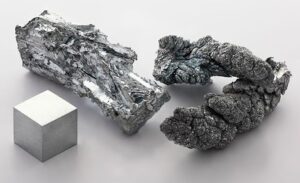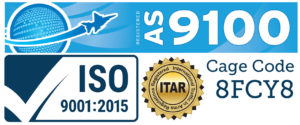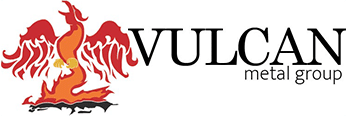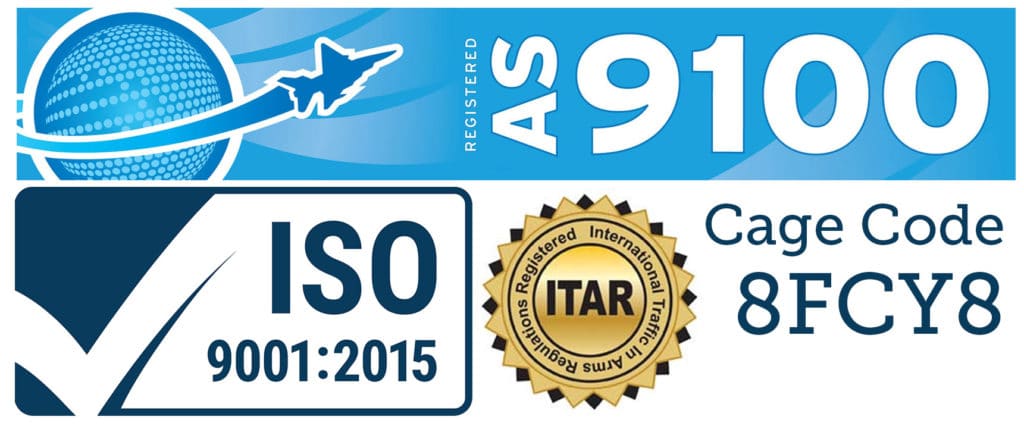TZM Molybdenum | TZM Alloy

TZM, the acronym for Titanium-Zirconium-Molybdenum, adds 0.50% titanium, 0.08% zirconium, and 0.02% carbon to pure Molybdenum. This combination enhances its strength, creep resistance and thermal stability.
TZM Molybdenum Properties and Appearance
With a melting point of 2,623 degrees Celsius (4,753 F) it is used in high temperature applications. TZM has a silvery white appearance, with a hint of gold luster and is part of the corrosion-resistant and high-temperature group.
TZM is more expensive than pure molybdenum, however in appropriate applications this is justified by its increased strength at greater temperatures, a higher recrystallization temperature, improved hardness and good ductility. TZM also exhibits excellent corrosion resistance, making it ideal for use in chemical processing plants as well as the oil and gas industries, whilst its thermal stability and electrical conductivity makes TZM a useful alloy in the semiconductor industry.
In elevated temperature applications, TZM’s higher strength, hardness, creep resistance and ductility ensure it will not weaken or soften. In addition, TZM demonstrates good thermal conductivity, low vapor pressure and is machinable. TZM is recommended for high-strength, high-temperature structures and applications operating between 700 and 1,400 degrees Celsius. It is less prone to delaminating, cracking or breaking compared to pure molybdenum under these extreme conditions. However, like pure molybdenum, TZM begins to oxidize at 400 degrees Celsius and oxides rapidly in atmospheres above 500 degrees Celsius. Despite being similar in strength to pure molybdenum at room temperatures, at high temperatures, exceeding the recrystallization temperature of pure molybdenum (900 to 1,100 degrees Celsius), TZM is much stronger. In load-bearing applications exceeding 1300 degrees Celsius, TZM is twice as strong as pure molybdenum.
TZM is commonly produced by powder metallurgy or arc-cast processes via progressive powder metallurgy techniques with the addition of particle-strengthened carbides and oxides to inhibit grain growth at elevated temperatures. This combination increases the ductility and creep strength of the alloy.
TZM Molybdenum Applications
TZM is commonly used in rocket nozzles, vacuum furnace components, die inserts, heat shields, jet engine exhaust cones, fuel cells, anodes in X-ray tubes, gas pipelines, annealing and sintering, light-alloy casting molds and high temperature structural parts. TZM is useful where demanding mechanical load at temperatures above 900 degrees Celsius, or when recrystallization and embrittlement of pure molybdenum is a concern due to repeated temperature cycling and handling. Industries where TZM is used include:
- Aerospace Industry
- Defence Industry
- Automotive Industry
- Nuclear Industry
- Semiconductors Industry
- Power generation Industry
- Metalworking Industry
- Electronics Industry
TZM Molybdenum Formats Supplied
Vulcan Metal Group is a leading global supplier of Molybdenum TZM in bar, plate, rod, sheet and wire. We can make custom machined and finished parts supplied to print from materials we supply.
Request a quote for TZM alloy or Contact us for more information on how Vulcan Metal Group can help you.

Did You Know
The element Molybdenum was discovered in 1778 by Carl Wilhelm Scheele and isolated in 1781 by Peter Jacob Hjelm.
Later on, in the mid-20th century, scientists sought to enhance molybdenum’s properties for demanding applications. The addition of tiny amounts of titanium (Ti) and zirconium (Zr) along with carbon (C) resulted in the creation of TZM alloy in the 1950s.
Molybdenum TZM alloy, with its unique blend of properties and versatility, continues to push the boundaries of engineering and technology. As research progresses, we can anticipate even more innovative and unexpected applications for this remarkable material. Exploration is ongoing in emerging fields including:
- Additive Manufacturing – Scientists are investigating the use of TZM in 3D printing processes to create complex, high-performance components.
- Energy Storage – TZM’s thermal conductivity and stability could be harnessed in advanced energy storage systems.
- Space Exploration – Its lightweight, high-strength properties make it a potential material for future space exploration missions.
How Molybdenum TZM alloy is used
Aerospace and Spacecraft Vehicle Applications
Structural Applications
TZM is used in critical aerospace structural supports and components, including engine systems, engine mounts, gas turbine components, gas turbine blades, and hypersonic vehicle structures. Once again, the material’s high strength, stiffness, resistance to extreme temperature and pressure, and overall durability make it a frequent choice.
Propulsion Systems and Hypersonic Vehicles
Rocket Nozzles & Combustors: Rocket nozzle temperatures during take-off can often reach between 2,000 to 3,500 degrees Celsius (3,632 to 6,332 degrees Fahrenheit). The exact temperature depends on various factors including the type of propellant used and the specific design of the rocket. TZM is typically used in the design of rocket nozzle throats, combustors and other parts exposed to direct combustion heat, since the material can withstand high temperatures and pressures generated during rocket propulsion and rocket exhaust, making it an excellent material selection for these components.
Hypersonics is the study of flight at speeds at Mach 5 and higher. Though engineers continue to grapple with challenges related to physics, aerodynamics, and heat-related design, TZM is a material that is used in hypersonic vehicle leading edges and nose cone design, since they experience the most intense heating due to aerodynamic friction. TZM withstands extreme temperatures at hypersonic speeds without deforming or melting.
Thermal Barrier Coatings, Heat Shields and Thermal Protection Systems
High-temperature resistance makes TZM suitable for applications where thermal insulation and protection are required to shield the vehicle’s interior and sensitive components from extreme heat during atmospheric re-entry. It’s a reliable substrate material for thermal barrier coatings (TBCs) applied to aerospace engine components to protect them from high-temperature oxidation and corrosion, thus improving their longevity and performance. The material is also used in the construction of heat shields, rocket thrusters and thermal protection systems including reaction control systems, for spacecraft and re-entry vehicles.
TZM Applications in Electronics
In the electronics industry, TZM alloy is valued for its high thermal and electrical conductivity, as well as its stability at elevated temperatures. Here are some specific ways it is used:
Contacts and Connectors: TZM is used to manufacture electronic and electrical contacts and connectors that need to withstand high temperatures and mechanical stress without degrading. Its ability to maintain conductivity and structural integrity at high temperature makes it ideal for these applications.
Semiconductor Physical Vapor Deposition and Thin-Film Deposition: Physical Vapor Deposition (PVD) involves vaporizing the solid material, in this case TZM, and condensing it onto the substrate using a sputtering process. The result a uniform and conformal material coating. It is widely used in industries such as semiconductors, also in aerospace and biomedical, where thin film properties are critical for performance and reliability. TZM’s high melting point and resistance to thermal shock ensure long-lasting and reliable performance.
Heat Sinks and Thermal Management: Due to its excellent thermal conductivity, TZM is used in heat sinks and other thermal management components that dissipates heat from electronic devices. This helps prevent overheating and ensures reliable operation of electronic circuits.
Vacuum Furnace Components: TZM’s resistance to high temperature and vacuum environments makes it suitable for heating elements, shields, and support structures used in vacuum furnaces. These components are essential for manufacturing processes that require precise temperature control and contamination-free environments.
X-ray Tube Components: The alloy is used in the manufacture of anodes and other components in X-ray tubes due to its high melting point and ability to withstand intense thermal loads. This ensures the durability and performance of X-ray equipment.
Fabrication Considerations:
TZM is a hard material, so machining it requires specialized tools and techniques, often involving carbide tools and slow feed rates to avoid excessive tool wear. After the initial machining process a grinding and finishing process may be required to achieve the final dimensions and surface finish. Vulcan Metal Group’s precision machining services are capable of hold tolerances to +/1.001”, ensuring component meet exacting specifications.
Your Title Goes Here
Your content goes here. Edit or remove this text inline or in the module Content settings. You can also style every aspect of this content in the module Design settings and even apply custom CSS to this text in the module Advanced settings.
TZM Molybdenum Key Properties
| Property | Value |
| Chemical Composition | Mo (98%), Ti (0.5%), Zr (0.08%), C (0.03%) |
| Density | 10.22 g/cm³ |
| Melting Point | 2620°C (4748°F) |
| Tensile Strength | 690 MPa at 25°C |
| Yield Strength | 480 MPa at 25°C |
| Elongation at Break | 10% at 25°C |
| Thermal Conductivity | 130 W/m·K at 20°C |
| Specific Heat Capacity | 0.276 J/g·K |
| Coefficient of Thermal Expansion | 5.4 x 10^-6 /°C (20-1000°C) |
| Hardness | 250 HV |
| Electrical Conductivity | 18.7% IAC |
| Modulus of Elasticity | 329 GPa |
Address
Vulcan Metal Group LLC
23888 Madison Street
Torrance, CA 90505
United States
Phone / Fax
Phone: +1 310.882.6841
Fax: +1 310.893.0579
Cage Code
8FCY8
Quality Policy: Vulcan Metal Group, LLC. supplies mission critical, special purpose materials, and products at a competitive price. The company’s quality system is registered to ISO 9001 and AS9100 and follows its principles for the governance of the business. An active continual improvement program and compliance with all applicable OSHA, federal, and state regulations is maintained.


